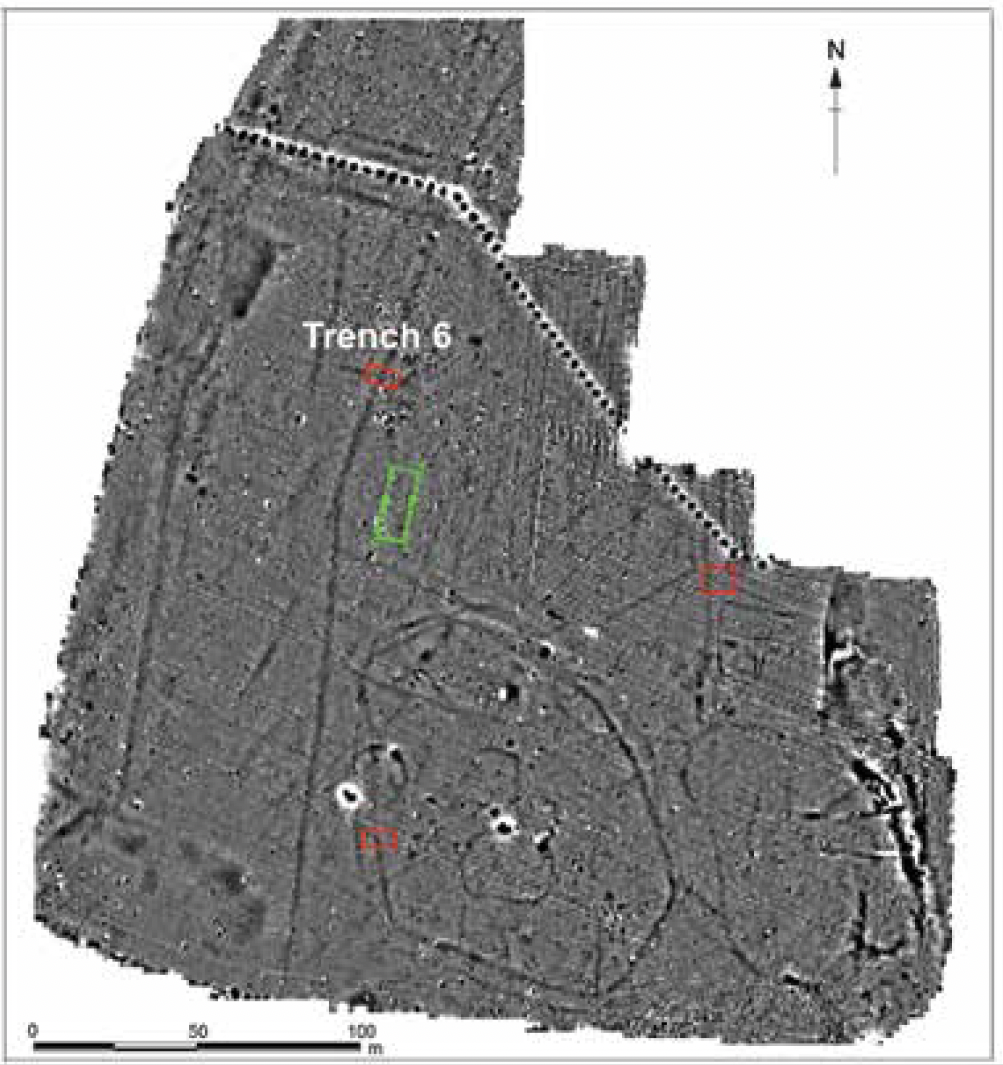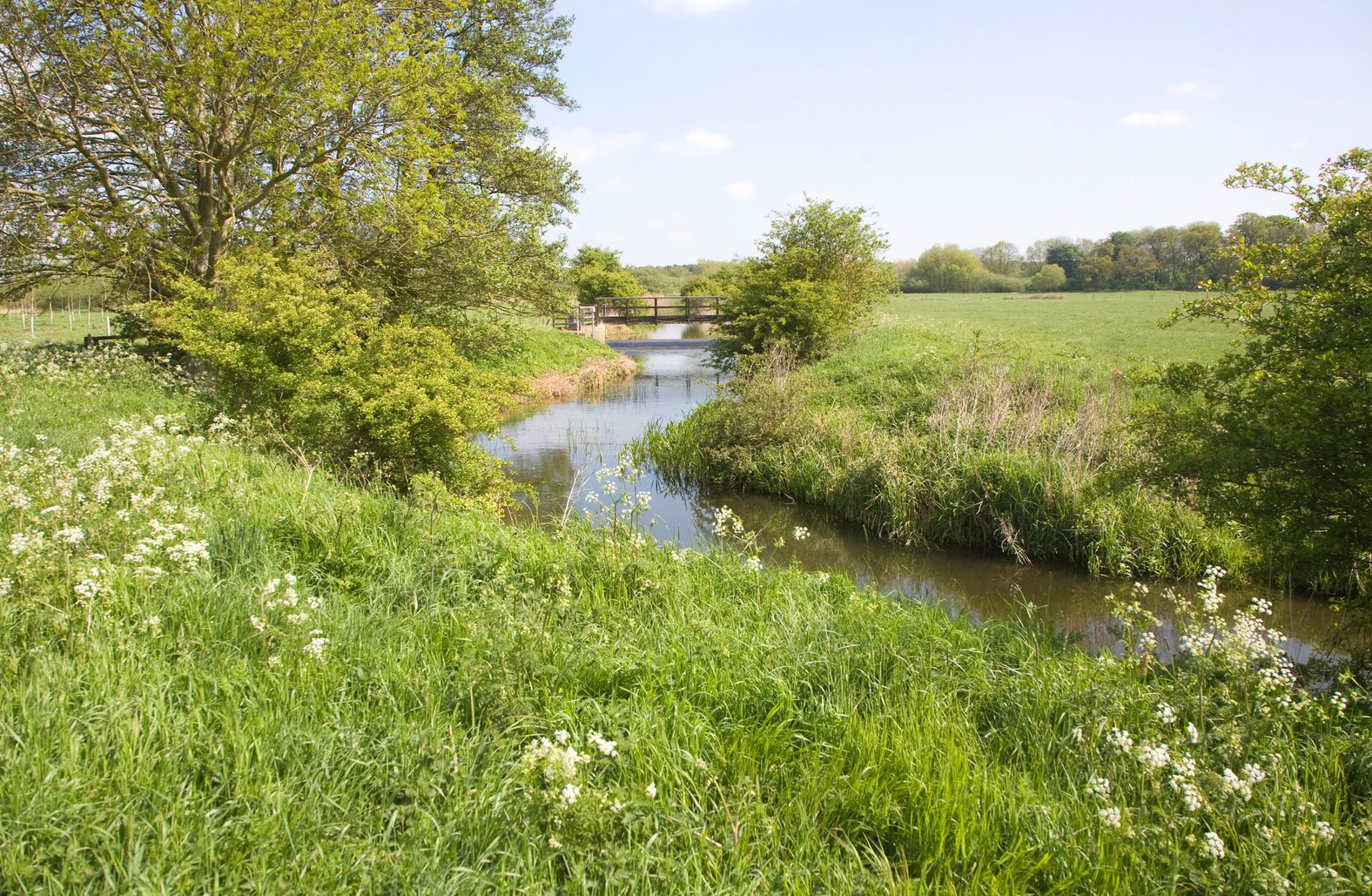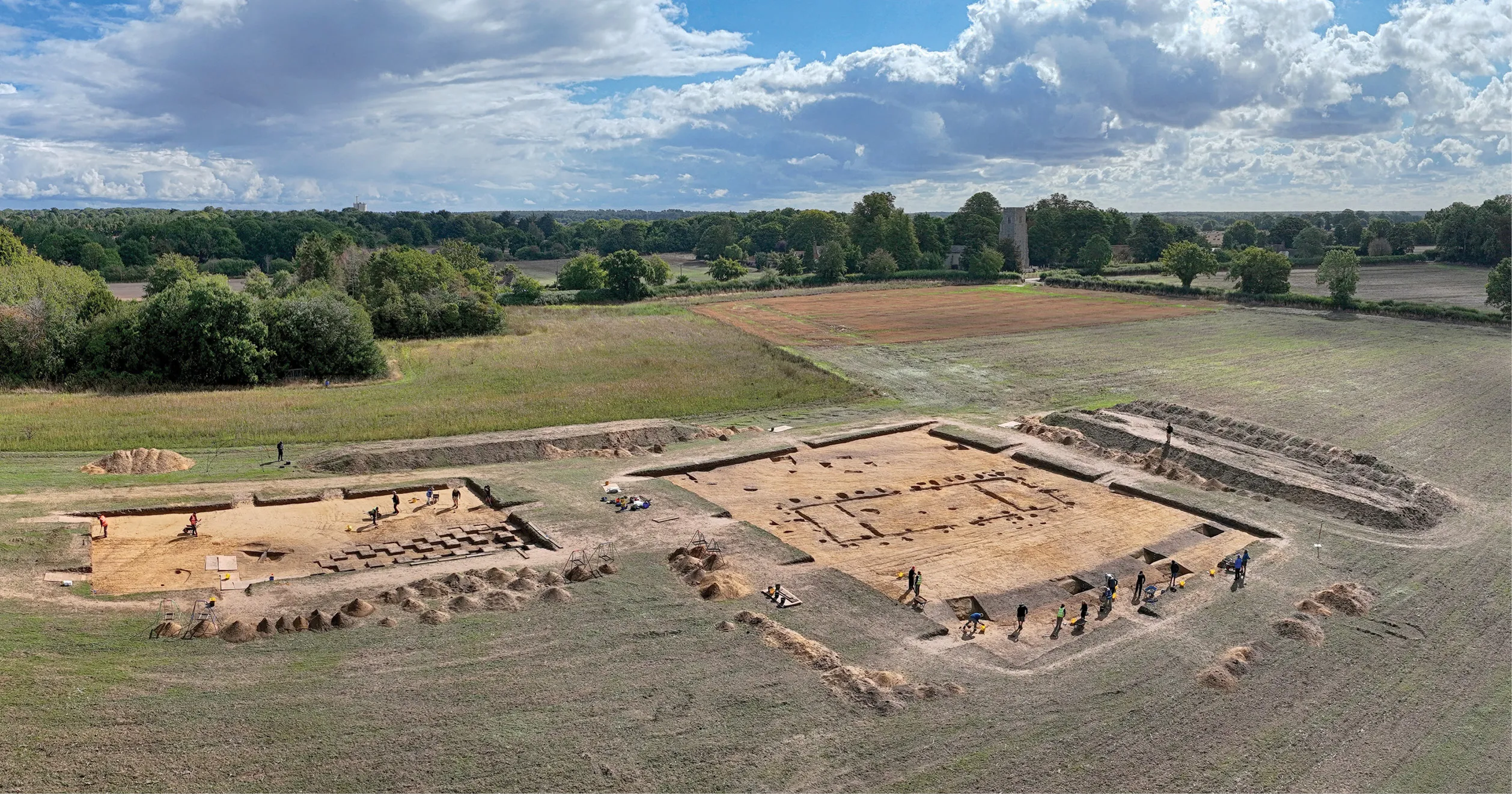Raedwald’s Royal Palace and cult centre, Rendlesham
In 731 A.D. approximately 100 years after Raedwald’s death who lay buried in the lavish boat burial at Sutton Hoo just a few miles South West of Rendlesham, Bede wrote in his ‘History of the English Church and People’ of Raedwald’s persistent pagan worship at his altar, alongside that of his Christian one. Bede wrote of a royal residence, a vicus regius called Rendlesham; Rendil’s steading in East Anglia [1]. Recent archaeological analysis has revealed the true magnitude of this lost Royal kingdom. Magnetometry covering around 50 hectares revealed, along with crop marks, the site of this supposed royal timber hall dating from 570 measures approximately 23 metres by 9.5 metres [2]. This Royal palace and its associated finds have been described as “some of the most important archaeological discoveries in the UK during the early 21st Century.” [3]

By the early 7th Century, Rendlesham was virtually the capital of Southern England [4] and was home to the East Anglian kings, the Wuffingas, the ‘people of the wolf’ who came from Sweden and were an offshoot of the Scylfings. At this time the Deben estuary was navigable as far as Rendlesham and the site of this Royal palace has been likened to Uppåkra in Southern Sweden and the Royal seat at Lejre in Denmark [5]. What’s more, the Wuffingas Swedish Royal house of Uppsala, just North of Stockholm and great religious centre at the royal capital at Uppsala later became mirrored in Rendlesham with its connection “between temple, royal halls and the first Christian church” [6].

Excavations in 2022 confirmed that the Royal palace and cult centre at Rendlesham is of international importance being the “most extensive and materially wealthy settlement of its date known in England” [7] and appears to have provided the longest-lived residence. Unusual and high-status objects of exceptional wealth evidence long distance trade contacts, including Merovingian gold coins and copper-alloy brooches that parallel ate 6th century examples from Ukraine. Earlier, around the 4th century, the site of Rendlesham was split into South, central and North zones following the side of Deben valley just West of the present-day St Gregory’s Church. Many pre-Roman coins and brooches from the 1st century onwards have been discovered in these areas and on the East side where the ground is much higher with heavier clay soils this area shows signs of religious activity [8]. Finds from this area include over 50 Roman coins and a hippocampus brooch, along with other findings that are indicative of votive offerings where it this has been interpreted that the area was perhaps the site of a rural shrine to the East of the main cult centre and hint “at a religious function for this site” which is supported by other finds [9].

Many ancient cult sites share broad features characteristic of liminal topography and geography, frequently being high or low down locations, enclosed or being far away. Sites of Royal authority shared a common attribute by being on the edge of settled communities, enhancing such numinous power by being both focal and marginal, sources of spiritual and worldly direction [10]. The Wuffinga estate amidst Rendlesham’s ecological landscape imbued liminality, with riverside grasslands down to the Deben and hunting grounds surrounded by forests. Such locations are charged with power because of their physical character, that influences people’s movements, actions, and experiences [11]. The landscape itself has been described as an actor in human affairs, with its patterns and influence on the past are difficult to understand without considering its influence [12].
In 2023 as further stratigraphic layers were excavated, a rare possible pre-Christian temple was found approximately 60 metres to the South of the footprint of the great royal hall. The royal compound was also bounded by a 1.5 kilometre-long perimeter ditch that enclosed an area of 15 hectares [13] which was set within a larger settlement of over 50 hectares, which for 150 years, between 570 A.D. and 720 A.D. was the central province of the East Anglian kingdom. [14] These ancient great hall complexes sustained a primary function of cult and public assembly, becoming “persistent antecedent strands in the life histories of these places”. [15]


References
1. Colgrave, Bertram, and Mynors, R.A.B. (ed. and tr.) (1969) Bede’s Ecclesiastical history of the English people, Oxford Medieval Texts. Clarendon Press, Oxford.
2. Minter, F., Plouviez J, & Scull, C. (2016) Rendlehsam Survey 2008-2014: Assessment Report. Historic England project reference 6471. Suffolk County Council Archaeology Service.
3. Anglo-Saxon Palace at Rendlesham (2016) www.uos.ac.uk/news/anglo-saxon-palace-rendlesham
4. Clarke, R.R. (1960) East Anglia. Thames & Hudson, London.
5. Medieval Histories (2016) News about the Middle Ages Rendlesham – An Anglo-Saxon Royal Palace Near Sutton Hoo.
6. Bruce-Mitford. R.L.S. (1948) Saxon Rendlesham: Some preliminary considerations. Proceedings of the Suffolk Institute of Archaeology. Ipswich. XXIV (3).
7. Scull, C. (2022) Royal Hall of the East Anglian Kings found in Suffolk.
https://heritagesuffolk.wordpress.com/2022/10/04/royal-hall-of-the-east-anglian-kings-found-in-suffolk/
8. (2022) Rendlesham and south-east Suffolk in the fourth century and beyond with Jude Plouviez. SCC Archaeology.
9. Minter, F., Plouviez J, & Scull, C. (2016) Ibid
10. Blair, J. (2018) Building Anglo-Saxon England, Princeton University Press, Oxfordshire.
11. Blair, J. (2018) Ibid.
12. Williamson, T, & Mason, A. (2017) Ritual Landscape in Pagan and early Christian England. Fragments: Interdisciplinary Approaches to the Study of Ancient and Medieval Pasts. Volume 6.
13. Suffolk Heritage Explorer (2023) 1,400-year-old temple discovered at Suffolk royal settlement. https://heritagesuffolk.wordpress.com/2023/11/21/1400-year-old-temple-rendlesham/
14. Scull, C. (2022) Ibid.
15. Thomas, G. & Scull, C. (2021): Practice, Power and Place: Southern British Perspectives on the Agency of Early Medieval Rulers’ Residences, Norwegian Archaeological Review.
